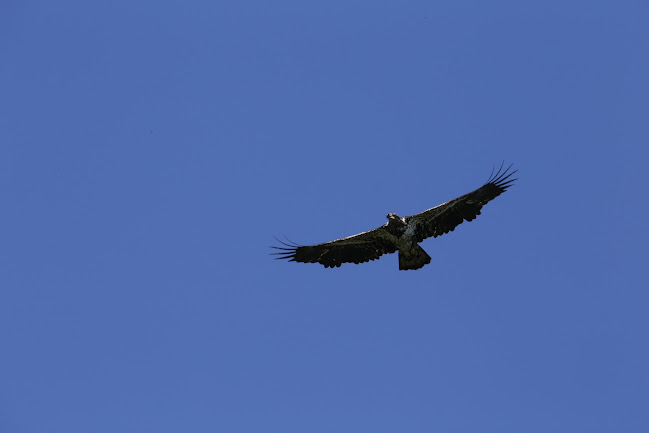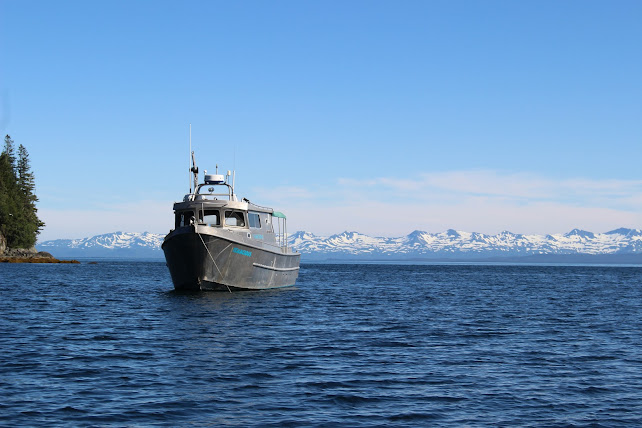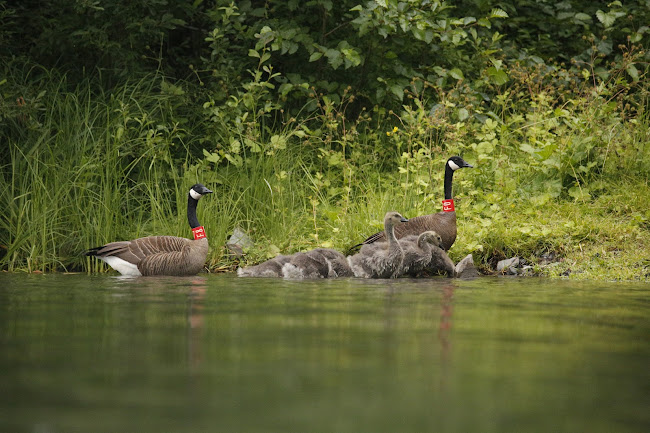Island Monitoring
Learned a lot last week as we monitored about half the nest islands in the program. Found evidence of successful nests, but also found several eggs that didn't hatch or succumbed to predators. The sloughs that we navigated through with the airboats held goslings, and we saw many other young feathered beings like Swan cygnets. Still have a lot of work ahead of us finishing up islands and analyzing data, but last week was a step in the right direction. This year we are taking a special look at Equisetum, which are horsetail plants, and if they have any effect on nesting Duskies. Several ponds on the delta are becoming completely engulfed in horsetail, but it is unknown how that impacts Duskies. Other ponds have horsetail around some edges, while some have none at all. Also, this year was the first year the Dusky Crew transitioned away from paper data sheets to an online format, using ArcGIS Survey123. A benefit of using Survey 123 is the use of pictures of each island, so the whole crew can compare their own thoughts as to what maintenance needs to be done, if any. This way there can be multiple inputs and thoughts on specific islands, without even visiting them. For example, I may visit an island and conclude that it needs maintenance because only 20 percent has sufficient shrub cover. However, the rest of the crew might see that image and say that they think there is 30 percent cover, which might be sufficient enough for no maintenance. I may have been the only one that visited that island, but others can see it from photographs. There were a few bumps in the road with this new transition that were sorted out in the evening at camp, but once data collection is complete, variables will be able to be analyzed further.
When we find islands with evidence of nests, I like to lay out egg membranes (bottom) and caps (top left). By counting membranes, we can best determine how many goslings hatched successfully.
When we found eggs still present on the island, usually being incubated, we would candle them and make note of them in our surveys.
Short-billed Gull (Mew Gull) eggs. The Mew Gull recently had its name changed to Short-billed Gull in 2021.
Successful natural nest I stumbled across while navigating between islands.
Some drags were harder than others, with drags through horsetail topping them all.
Equisetum (horsetail).
This island lay completely dry due to a beaver dam that held back its water being destroyed.
Nature's architect can help hold water in a lot of the ponds on the delta.
Active island within walking distance from Dusky Camp.
Always nice when there is just enough water to paddle through the horsetail, rather than having to walk through it.
Cleaning a recently found moose shed off to add to the camp collection.
Gosling on the bank of Walhalla Slough.
Swan cygnets.
As I was returning to my Poke Boat after exiting quickly to photograph the Swan cygnets before the became too far away, I saw this curious Moose along an alder line. We proceeded to look at each other for several minutes as I inched closer before she finally had enough and disappeared.
Eagle soaring over the delta.
Mallards and Pintails.
While out monitoring, I saw my first Red-throated Loon and Short-billed Gull (Mew Gull) nest. Also found one of the two frog species on the Delta, saw a Moose, and three separate collared Duskies. Photographed plenty of ducks, found several natural nest sights - successful and unsuccessful, and observed another use of the islands by seeing a swan nest on one. Duskies that utilized the islands for nesting had success and failure, but island camera footage will reveal what the Dusky Crew wasn't able to see as peak nesting and hatching occurred on the delta.
Sheridan Glacier glowing in the background as a collared Dusky and its partner fly over an island being monitored.
If there is little wind, it can sometimes help to lay membranes and caps out on my Poke Boat. Additionally, sunlight can make membranes very brittle, so it can be useful to hold them underwater for a minute or two to allow them to become for flexible, and allow us to examine them better.
Membranes that look to be shredded, in multiple pieces, or not in the textbook egg shape, were likely depredated. Some islands will have successful membranes, depredated eggs, and unhatched eggs all in the same nest, making it very difficult to determine what happened, and the order it did.
The beginning of our survey on Survey123, put together by a Dusky Crew member working on his master thesis related to horsetail impacting Duskies.
Island with a Trumpeter Swan nest.
Sometimes Duskies will roll nonviable eggs off the nest and even off the island.
Gosling on the bank of Walhalla Slough.
Pair of Red-throated Loons cruising by an island.
.JPG)















.JPG)












Comments
Post a Comment